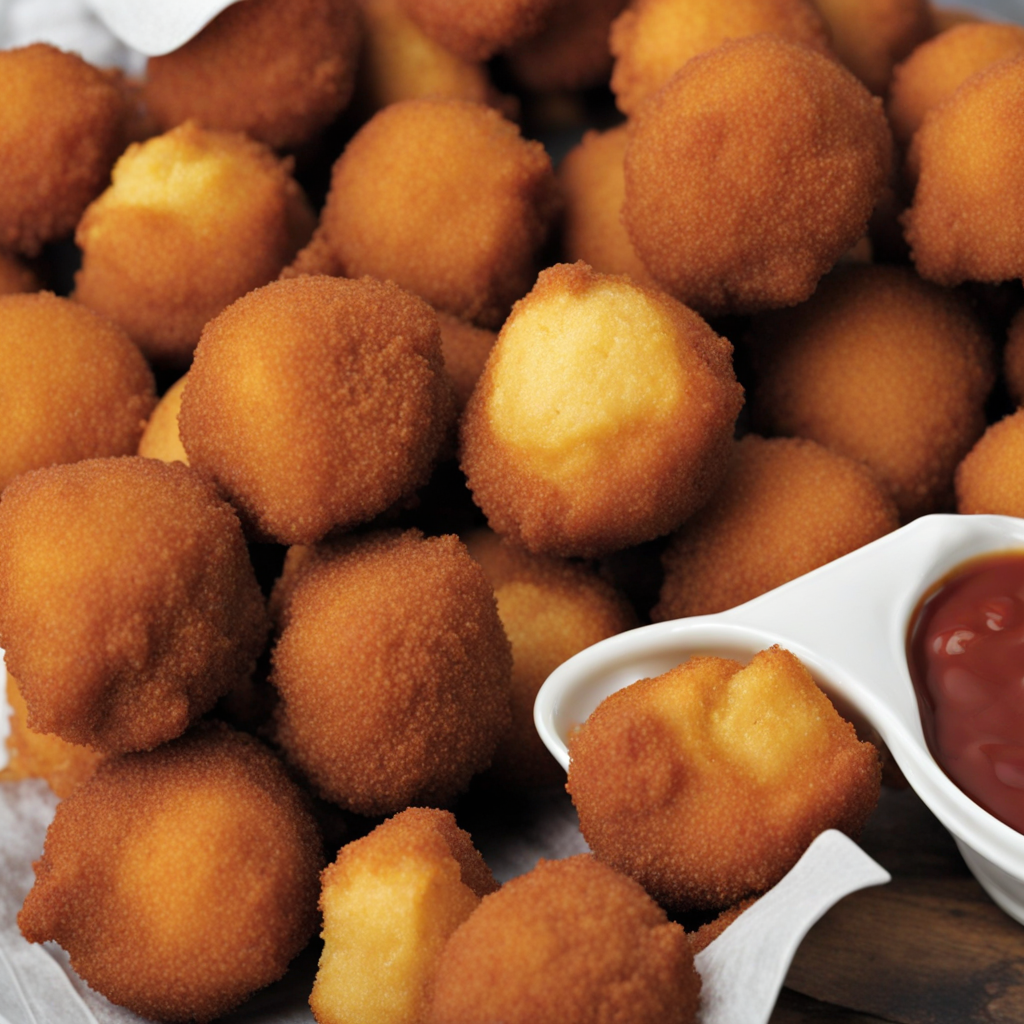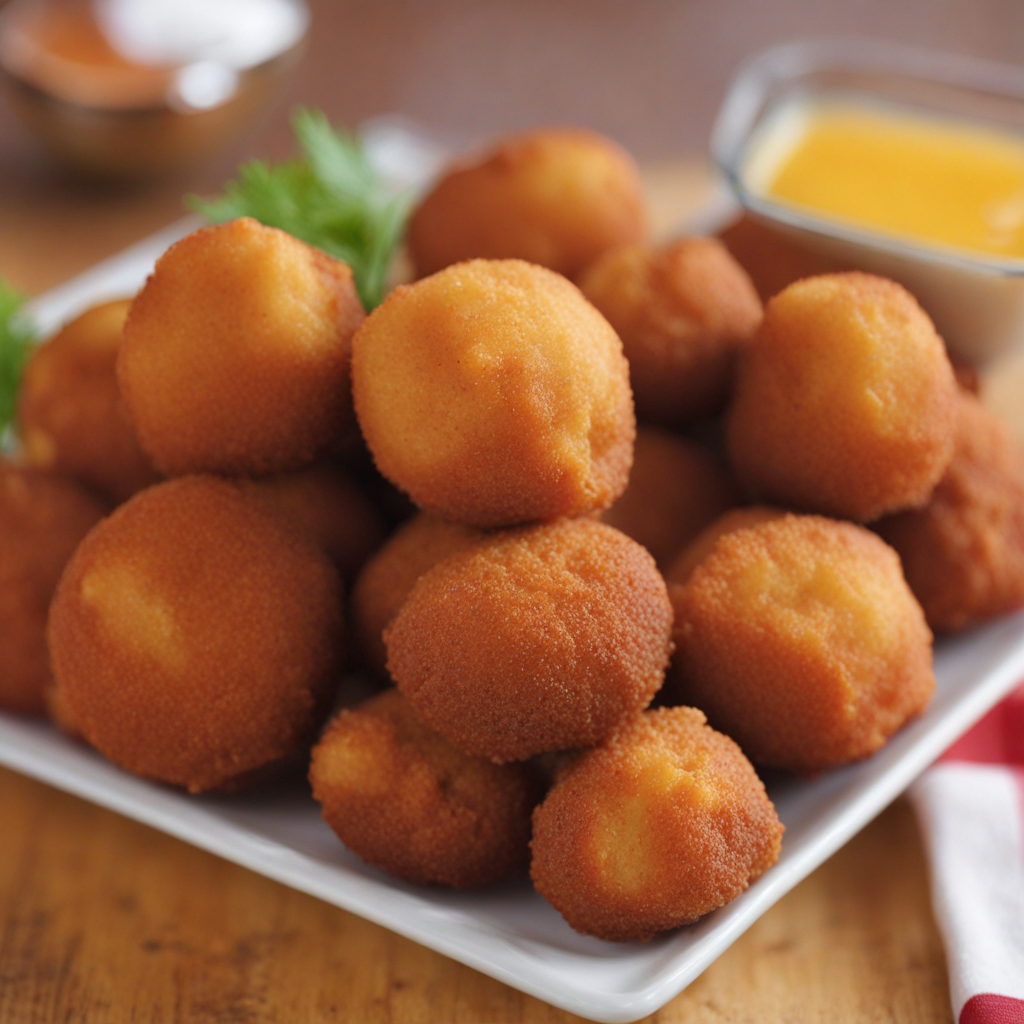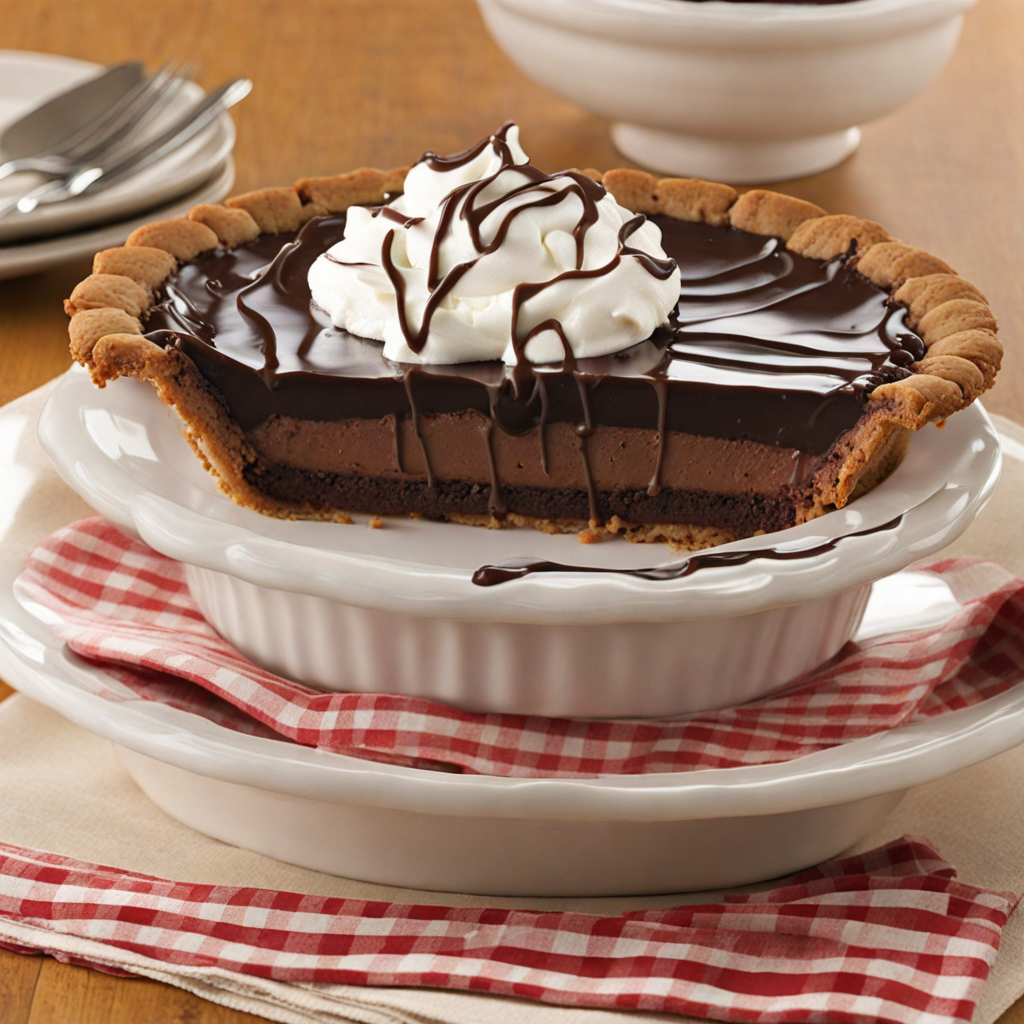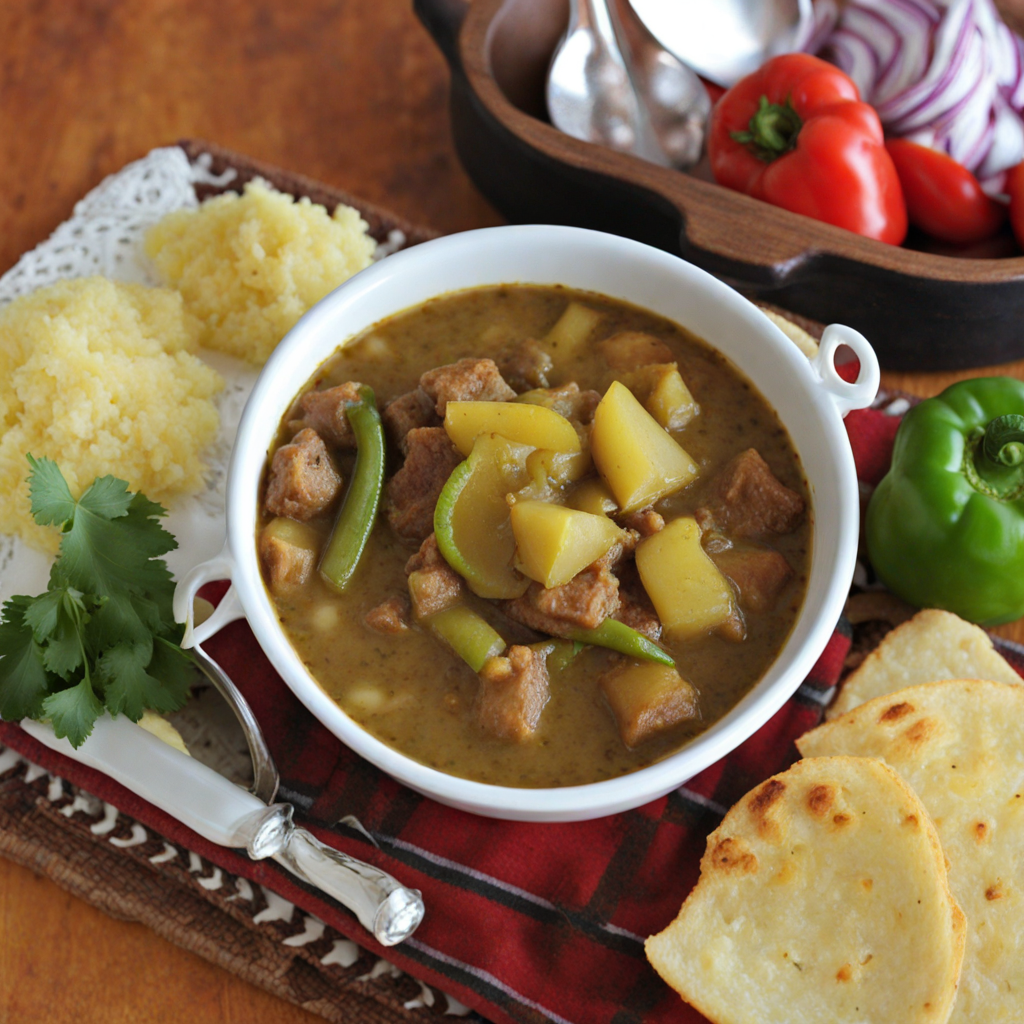Hushpuppies
Hushpuppies are a delightful southern American dish that embodies the spirit of comfort food. These small, round or oval-shaped fritters are made from a simple batter of cornmeal, flour, eggs, and buttermilk, often flavored with ingredients like onions, green peppers, or spices. When fried to a golden brown, they develop a crispy exterior that gives way to a soft, moist interior, making each bite a satisfying experience. Traditionally served alongside fried fish or shrimp, hushpuppies are a staple at barbecues, seafood joints, and family gatherings, where their savory taste complements a variety of dishes. The flavor profile of hushpuppies is subtly sweet and savory, with the cornmeal providing a pleasant earthiness that resonates with the rich culinary heritage of the American South. The inclusion of sautéed onions or green onions adds a hint of freshness and depth, while spices offer a gentle warmth that can vary from mild to spicy, depending on personal preference. This versatility allows hushpuppies to pair wonderfully with a range of dipping sauces, from tangy tartar sauce to zesty remoulade, enhancing their appeal even further. Beyond their delicious taste, hushpuppies carry a sense of nostalgia and tradition, often evoking memories of family meals and community gatherings. They are not just a dish but a symbol of Southern hospitality, inviting friends and family to come together and enjoy the simple pleasures of life. Whether you're enjoying them as an appetizer, side dish, or a snack on their own, hushpuppies promise a unique taste experience that captures the essence of American comfort food.
How It Became This Dish
Hushpuppies: A Culinary Journey Hushpuppies—those delightful, deep-fried cornmeal balls that accompany Southern dishes—are more than just a side dish; they embody a rich tapestry of American culinary history, reflecting the fusion of cultures, regional influences, and social practices. Their evolution from humble origins to a beloved staple reveals a narrative steeped in tradition and innovation. #### Origins: The Birth of Hushpuppies The precise origins of hushpuppies are as murky as the waters of the bayou, and their etymology is equally contested. The earliest accounts trace their roots back to the Southern United States, particularly in regions such as Louisiana and the Carolinas, during the late 19th century. Some food historians speculate that the term "hushpuppy" may have derived from the practice of feeding dogs leftovers or scraps to quiet them—essentially telling them to "hush, puppy." The first documented use of the term in print appeared in the early 20th century, solidifying its place in Southern vernacular. The most prevalent theory regarding their culinary inception points to the use of cornmeal by enslaved Africans and early settlers. Cornmeal itself was a staple in Southern cooking, particularly in the diets of Indigenous peoples and African Americans. The combination of cornmeal, water, and various seasonings created a versatile base that could be deep-fried into small, savory balls. While the exact recipe has evolved, the core ingredients—cornmeal, flour, and a leavening agent—have remained constant. #### Cultural Significance: Culinary and Social Ties Hushpuppies are emblematic of the Southern culinary tradition, symbolizing both resourcefulness and community. They were often served alongside fried fish, shrimp, or other hearty meals, providing a means to stretch ingredients and feed large families. Their presence at fish fries, barbeques, and family gatherings underscores their role as comfort food, meant to bring people together. These little orbs of flavor also carry cultural significance in African American communities. The preparation and sharing of hushpuppies often hark back to communal cooking practices that have persisted through generations. They represent not only a connection to ancestry but also a celebration of resilience, creativity, and the blending of African and European cooking traditions. As the Civil Rights Movement gained momentum in the mid-20th century, food became a symbol of cultural identity and pride. Hushpuppies, along with other Southern foods, were central to the African American experience, often featured at events, gatherings, and protests, serving as a means of cultural expression and solidarity. #### Development Over Time: From Regional Specialty to National Icon As the 20th century progressed, hushpuppies began to transcend their regional roots, gaining popularity beyond the South. The rise of fast food chains in the 1950s and 1960s contributed to the widespread appreciation of Southern cuisine, with hushpuppies finding a place on menus across the United States. They were often marketed as an exotic side dish, drawing curiosity from diners unfamiliar with Southern cooking. In the 1980s and 1990s, as the culinary landscape began to shift towards more diverse and inclusive representations of American food culture, hushpuppies were increasingly recognized in fine dining settings. Chefs began to experiment with ingredients, incorporating herbs, spices, and even gourmet additions like cheese or seafood. This evolution highlighted the adaptability of the dish and its capacity to fit into various culinary styles, from rustic to haute cuisine. Moreover, regional variations of hushpuppies emerged, with different parts of the country putting their unique spin on the classic. For example, in Louisiana, hushpuppies might be infused with Cajun spices, while Texas versions may incorporate jalapeños for a kick. These adaptations reflect the local ingredients, traditions, and palates, further enriching the dish's history. #### Modern Day: Hushpuppies in Contemporary Cuisine Today, hushpuppies are a beloved staple in Southern cooking, often served at seafood shacks, soul food restaurants, and BBQ joints. They also find their way into food festivals and fairs, where they are celebrated as a regional delicacy. The rise of the farm-to-table movement has led to a resurgence in traditional Southern foods, with chefs honoring the past while innovating for the future. Social media has played a significant role in reintroducing hushpuppies to new generations. Food bloggers and influencers showcase variations, highlighting creative recipes that appeal to contemporary tastes. From sweet potato hushpuppies to those made with exotic grains, the possibilities are endless, illustrating the dish's versatility and relevance in today's culinary scene. Furthermore, hushpuppies have become a symbol of Southern hospitality, often served to guests as a warm welcome. Their ability to evoke nostalgia and comfort makes them a favorite at gatherings, celebrations, and family dinners. In an era where food is increasingly viewed as a means of connection, hushpuppies stand out as a testament to the power of shared meals and culinary heritage. #### Conclusion: A Legacy of Flavor and Community As we explore the history of hushpuppies, we uncover not just a dish but a reflection of the American experience—one that intertwines diverse cultural influences, regional pride, and communal bonds. From their humble beginnings in the kitchens of the South to their status as an iconic food, hushpuppies have traversed a remarkable journey. They serve as a delicious reminder of the importance of food in shaping identity, fostering community, and celebrating heritage. In today’s fast-paced world, where culinary traditions often clash with modern trends, the enduring appeal of hushpuppies offers a comforting connection to the past. They remind us that sometimes, the simplest ingredients can create the most profound experiences. Whether enjoyed at a family gathering, a local diner, or a sophisticated restaurant, hushpuppies continue to bring people together, one crispy bite at a time.
You may like
Discover local flavors from United States







